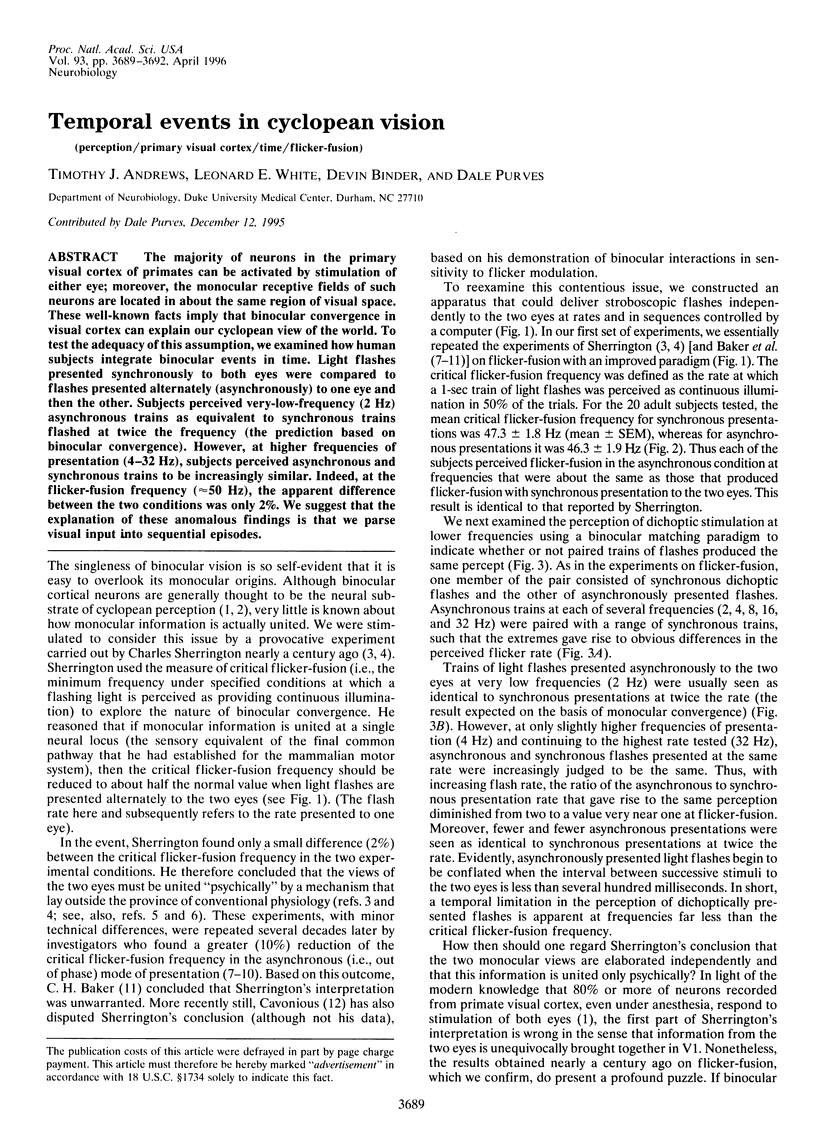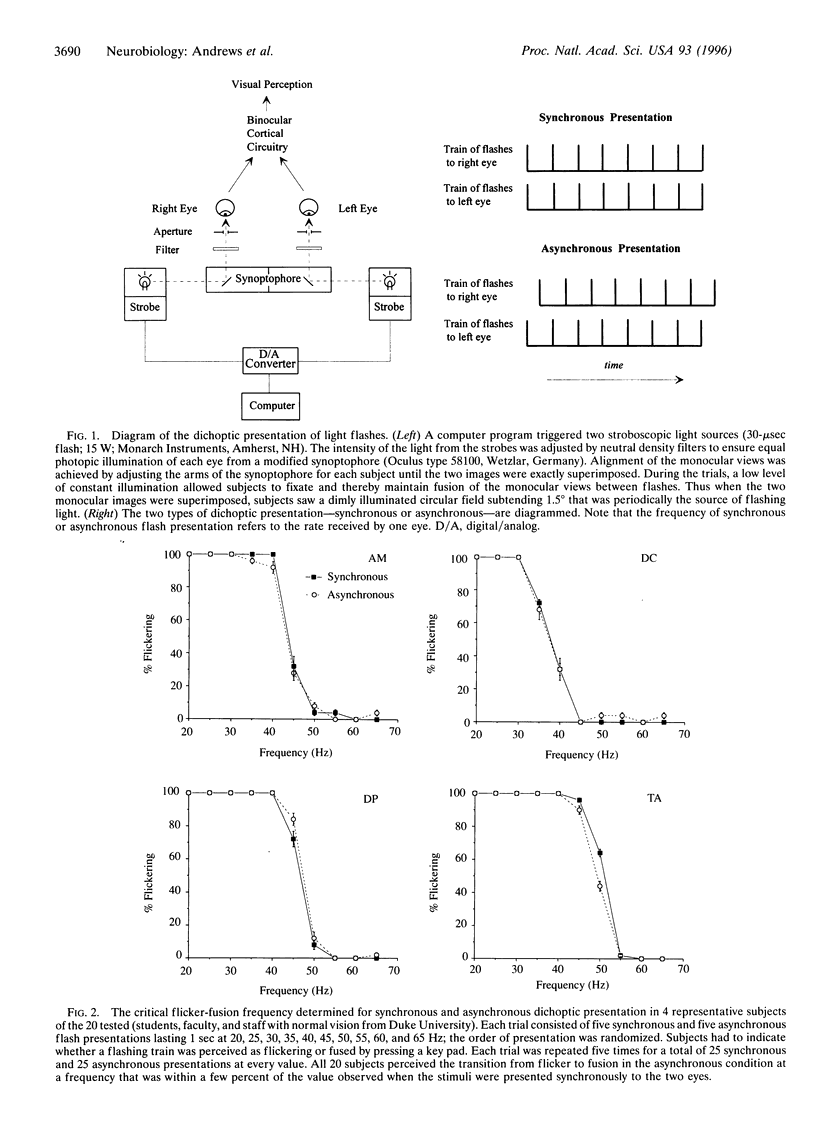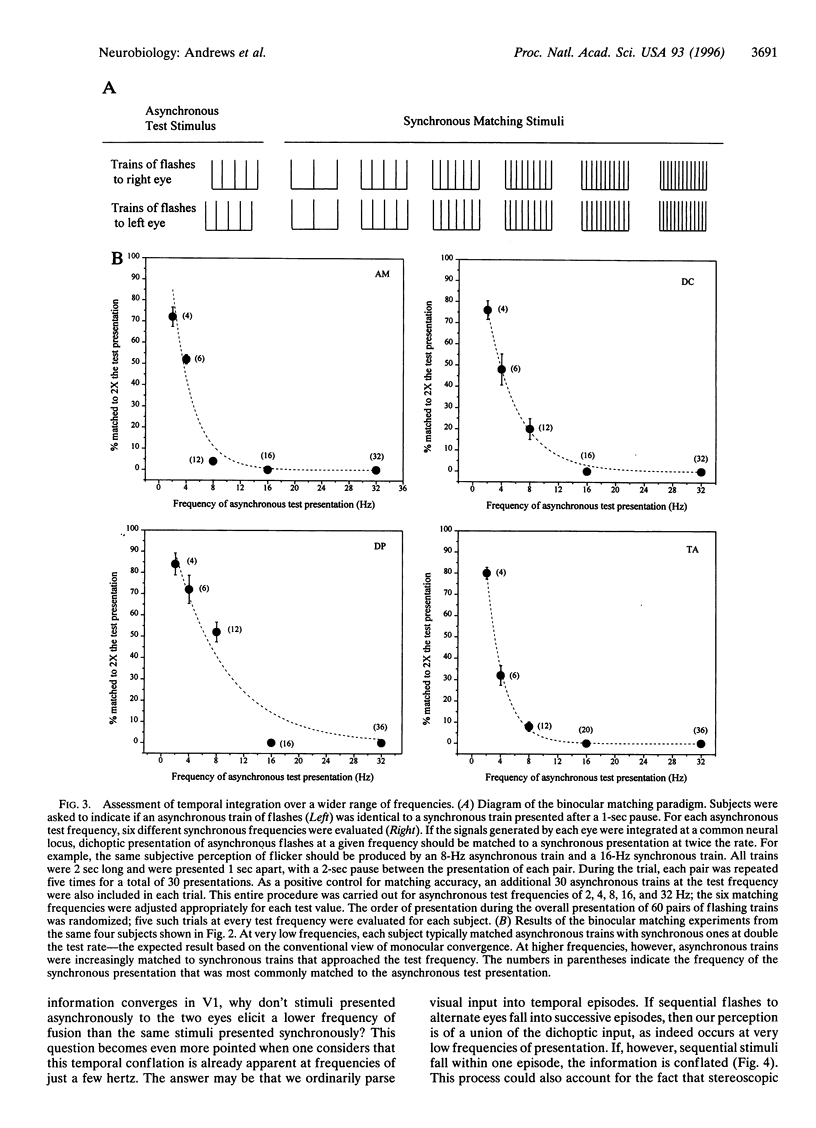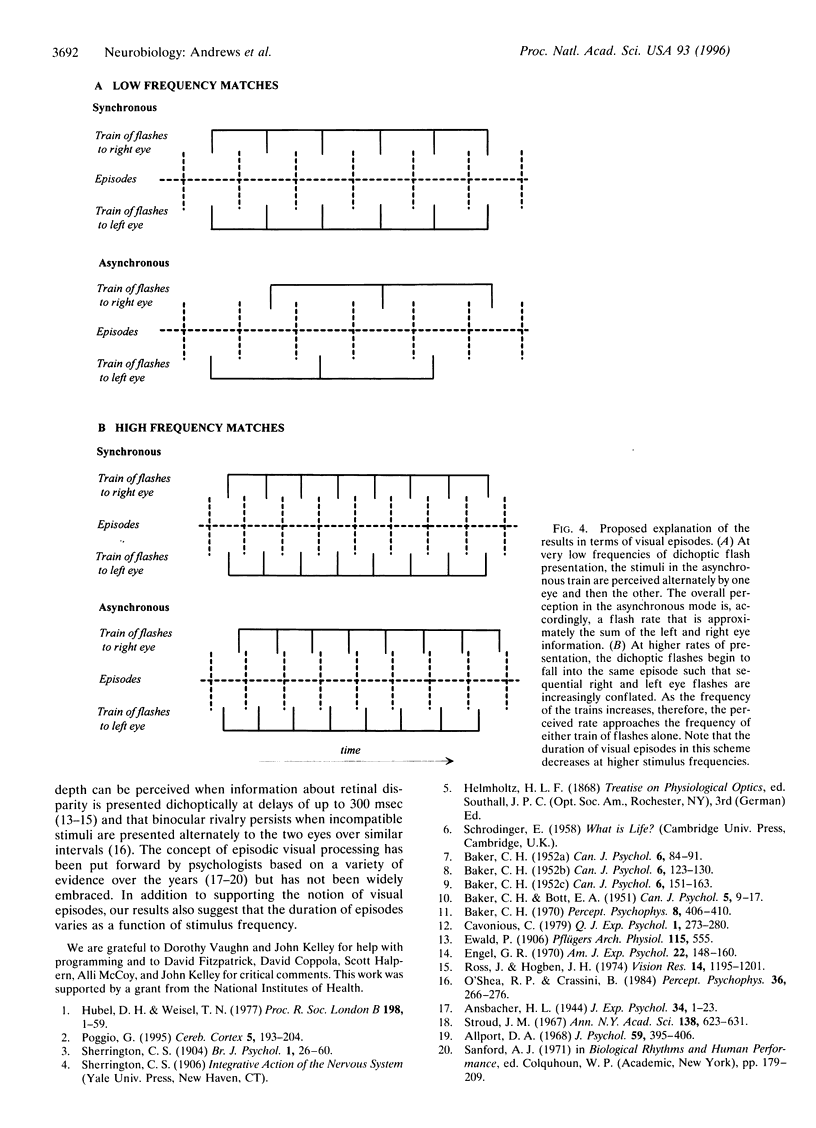Abstract
The majority of neurons in the primary visual cortex of primates can be activated by stimulation of either eye; moreover, the monocular receptive fields of such neurons are located in about the same region of visual space. These well-known facts imply that binocular convergence in visual cortex can explain our cyclopean view of the world. To test the adequacy of this assumption, we examined how human subjects integrate binocular events in time. Light flashes presented synchronously to both eyes were compared to flashes presented alternately (asynchronously) to one eye and then the other. Subjects perceived very-low-frequency (2 Hz) asynchronous trains as equivalent to synchronous trains flashed at twice the frequency (the prediction based on binocular convergence). However, at higher frequencies of presentation (4-32 Hz), subjects perceived asynchronous and synchronous trains to be increasingly similar. Indeed, at the flicker-fusion frequency (approximately 50 Hz), the apparent difference between the two conditions was only 2%. We suggest that the explanation of these anomalous findings is that we parse visual input into sequential episodes.
Full text
PDF



Selected References
These references are in PubMed. This may not be the complete list of references from this article.
- Allport D. A. Phenomenal simutaneity and the perceptual moment hypothesis. Br J Psychol. 1968 Nov;59(4):395–406. doi: 10.1111/j.2044-8295.1968.tb01154.x. [DOI] [PubMed] [Google Scholar]
- BAKER C. H., BOTT E. A. Studies on visual flicker and fusion. II. Effects of timing of visual stimuli on binocular fusion and flicker. Can J Psychol. 1951 Mar;5(1):9–17. doi: 10.1037/h0083531. [DOI] [PubMed] [Google Scholar]
- BAKER C. H. The dependence of binocular fusion on timing of peripheral stimuli and on central process. Can J Psychol. 1952 Jun;6(2):84–concl. [PubMed] [Google Scholar]
- BAKER C. H. The dependence of binocular fusion on timing of peripheral stimuli and on central process; 2. Asymmetrical flicker. Can J Psychol. 1952 Sep;6(3):123–130. doi: 10.1037/h0083560. [DOI] [PubMed] [Google Scholar]
- BAKER C. H. The dependence of binocular fusion on timing of peripheral stimuli and on central process; 3. Cortical Flicker. Can J Psychol. 1952 Dec;6(4):151–concl. [PubMed] [Google Scholar]
- Hubel D. H., Wiesel T. N. Ferrier lecture. Functional architecture of macaque monkey visual cortex. Proc R Soc Lond B Biol Sci. 1977 Jul 28;198(1130):1–59. doi: 10.1098/rspb.1977.0085. [DOI] [PubMed] [Google Scholar]
- O'Shea R. P., Crassini B. Binocular rivalry occurs without simultaneous presentation of rival stimuli. Percept Psychophys. 1984 Sep;36(3):266–276. doi: 10.3758/bf03206368. [DOI] [PubMed] [Google Scholar]
- Poggio G. E. Mechanisms of stereopsis in monkey visual cortex. Cereb Cortex. 1995 May-Jun;5(3):193–204. doi: 10.1093/cercor/5.3.193. [DOI] [PubMed] [Google Scholar]
- Ross J., Hogben J. H. Short-term memory in stereopsis. Vision Res. 1974 Nov;14(11):1195–1201. doi: 10.1016/0042-6989(74)90216-8. [DOI] [PubMed] [Google Scholar]


